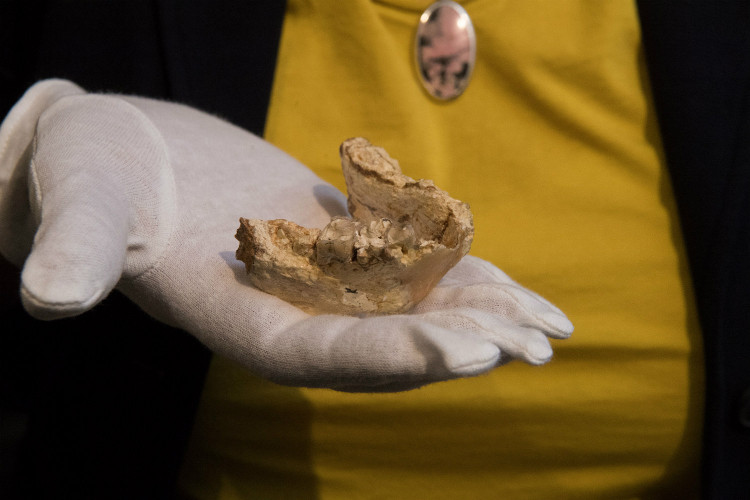Announcing new concussions about human origin
Researchers have long believed that the origins of humanity evolved from apes that lived about 5 million years ago in Africa. However, a new study of fossils found in Greece and Bulgaria has brought about a new hypothesis.
Researchers from France, Germany, Bulgaria, Greece, Canada and Australia analyzed the roots of two fossil specimens of the gibbon-like species , known as G raecopithecus freybergi , living ago. 7.2 million years ago. Accordingly, using the lower jaw tool of specimens excavated in Greece in 1944 and the upper molars of the specimen found in Bulgaria in 2009, scientists believe this may be The oldest member of the human lineage - starting after evolving away from the latter species evolved into chimpanzee - our closest relative.

Fossil teeth of gibbon-like creatures, known as Graecopithecus freybergi.(Source: DPA).
Until now, the oldest known subfamily , Sahelanthropus , lived 6-7 million years ago in the African Republic of Chad.
Talking to the press, the authors said that this is a surprising finding, since the origins of the human race are often known to have originated from the gibbons in Africa.
Based on the date of the Graecopithecus fossils, they hypothesized the evolutionary separation of the apes into the ancestors of humans and the ancestors of chimpanzees in the Mediterranean region. Accordingly, environmental changes may have helped to accelerate the evolution of gibbons into human ancestors.
So far, Graecopithecus is still a mysterious creature because fossils are found scattered everywhere. The size of this species is close to that of a female chimpanzee and usually lives in relatively arid grasslands and mountains, similar to the savanna grasslands in Africa today, along with species. antelopes, giraffes, rhinos, elephants, hyenas and wild boars.
- The findings identify human origin
- The oldest detection of human DNA can rewrite human evolutionary history
- Back in history, learn about the origin of tea
- The origin of the mermaid under a scientific perspective
- By 2040, too many meat products are not of animal origin
- Follow the trail of human legend
- Discover the similarity in the smile between chimpanzees and humans
- This is a human face if evolved from other animals that are not apes!
- The skull found in China can rewrite human history
- Humans know how to say it thanks to a genetic mutation
- Human language derives from the song of apes and birds
- Discovered species with auditory hearing in nature
 Discovered an ancient centipede fossil 99 million years old
Discovered an ancient centipede fossil 99 million years old Discovered bat-like dinosaurs in China
Discovered bat-like dinosaurs in China Discovered a 200-year-old bronze cannon of the coast
Discovered a 200-year-old bronze cannon of the coast Discover 305 million-year-old spider fossils
Discover 305 million-year-old spider fossils